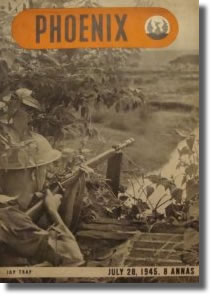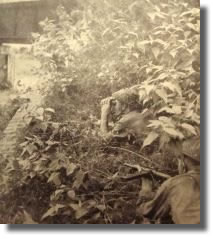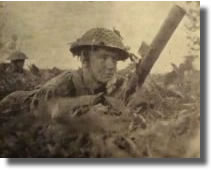
Return To Veterans Accounts Index
Phoenix Magazine 28 July
1945
JAP-TRAP
This business of ambushing was another
aspect of the "post-Rangoon" fighting.
.....When
surprised the Jap panics; and all infantry weapons can come into play,
with effect. During recent operations in Burma, where the Jap has been
attempting to escape through to Siam across difficult country, varying
from dense, jungle-covered hills of the Pegu Yomas to the flat country
by the railway and the Sittang River, there was plenty of opportunity for
real work on this proposition, before his big Pyu break-through attempts.
.....As the rains continued,
the undergrowth became thicker; a double-edged weapon. It restricted the
Jap to certain escape routes. It also allowed him to hide up easily. The
task was to learn his movements, and catch up with him before he pushed
on, or trap him on his way; in all events to wipe out as many as possible.
Now he wasn't using any one route frequently. But he had a practice of
sending forward recce parties who marked the way by putting small pieces
of paper on branches or scoring trees or simply breaking a branch in a
particular way.
.....Then he would come along
in roughly this order : first, local guides, tied and taken by force from
villages en route; then, following closely, a small party of up to three
or four Japs; and after that the main body, 100 yards or so behind, in
single file. Escape parties have often been ill-armed and have used anything
from local ponies and mules to elephants, for carrying their stores. All
these can, and often do, move at night.
.....Our ambushes have had
to achieve absolute concealment. Any suspicious noise or movement is fatal.
Fire power is best sited in depth, dependent on ground, visibility, the
strength of your ambush and a number of Japs on your plate. Once the ambush
was set it became a matter of supreme patience, with training and discipline
paying rich dividends. Simple and explicit orders would be given. Every
man had to know the intention and the exact time of opening fire. The leading
guides had to be allowed to get well through and past the ambush. The commander
would usually give the signal himself by firing; after that "hell
could be let loose" with every man's weapon.
.....There is an interesting,
perhaps an amusing, sidelight to that. If some of the men in a "Jap-trap" were
inexperienced a sensible rule was that their weapons would not be held
at the ready, but placed a yard away. This could make all the difference
between an itchy trigger and waiting
on the exact signal.
.....Very well. The ambush
is sprung. The rifles, the grenades, the brens, the mortars- all do their
stuff. And then? The Jap will almost always try some
sort of counter-attack. And once surprise was lost and the ambush had done
its best or worst there was no value in staying put. The better plan was
to withdraw to a pre-arranged and pre-recced rendezvous.
.....Perhaps in this way
: in one ambush recently the commander arranged his rendezvous forward
of the trap, purely, as it happened, because of considerations of ground.
The ambush was sprung successfully. And the counter-movement by the enemy
survivors finished up with two separate sections of Japs fighting themselves
in the dark, to the restrained joy of the ambush party, nicely established
at their rendezvous.

Pte. J. Greenacre of Norfolk, surveys
field of fire in ambush near the Sittang River.

OUR OBJECTIVE: TO STOP
THEM. Ambush taken up recently
by Platoon Commander Lt. A.C. Soden and Pte. D. Francis.

ANNIHILATION of Jap escape party will be helped
by Pte. A. Quelche’s mortar sited in rear of this typical Jap-trap
north from Pegu.

POSITION COVERED is chaung under railway. Trap
was set where footprints and other evidence of Japanese reconnaissance
work were discovered by patrol.
